Photos and video of huge asteroid 1994 PC1. It passed Earth safely January 18
Our thanks to EarthSky community member Steven Bellavia for sharing the video above. He gathered over 500 frames for over an hour to create a 30-second time lapse of the passage of asteroid 1994 PC1 near Earth on January 18, 2022.
A large stony asteroid safely passed Earth on January 18, 2022. Its estimated size was around 3,280 feet (about 1 km or .6 of a mile), around 2 1/2 times the height of the Empire State Building. As you can see from this asteroid’s label – (7482) 1994 PC1 – we’ve known about it since 1994. It is classified as a Potentially Hazardous Asteroid due to its size and relatively close flybys of our planet. An asteroid of this size strikes Earth approximately every 600,000 years.
But we had nothing to fear from 1994 PC1 at its 2022 close approach. Closest approach to Earth occurred on January 18, 2022, at 4:51 p.m. EST (21:51 UTC). This approach was the closest for this asteroid for at least the next 200 years for which astronomers have calculated its orbit.
The speeding asteroid passed 1.2 million miles (1.93 million km) from Earth, or about 5.15 times the Earth-moon distance. That’s a very safe distance!

Asteroid (7482) 1994 PC1 passing close to Earth on January 18, 2022, by Kevin Cintron (Sociedad de Astronomía del Caribe), from Ponce, Puerto Rico.
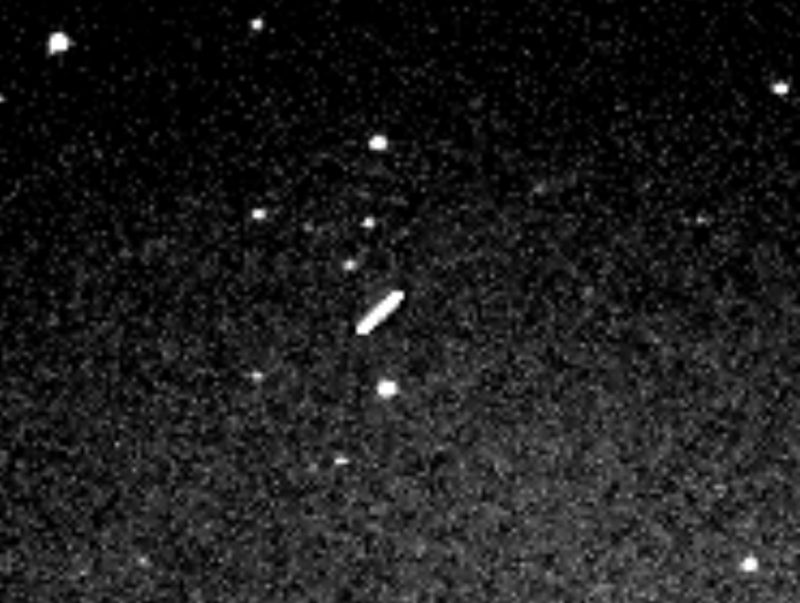

Potentially hazardous asteroid 1994 PC1
Robert McNaught discovered asteroid (7482) 1994 PC1 at the Siding Spring Observatory in Australia on August 9, 1994. With its trajectory in hand, astronomers found the space rock on earlier images from other observations that date back to September 1974. With 47 years of observations, its orbit is well established.
The huge space rock is traveling at 43,754 miles per hour (19.56 kilometers per second) relative to Earth. The considerable speed enabled amateur astronomers to spot the fast asteroid. It appeared as a point of light, similar to a star, passing in front of background stars over the course of the evening. Asteroid (7482) 1994 PC1 was shining in our sky at around magnitude 10. An object at 10th magnitude is a decent target for observers using a 6-inch or larger backyard telescope from a dark-sky site.
See a video comparing the sizes of some of the known asteroids.
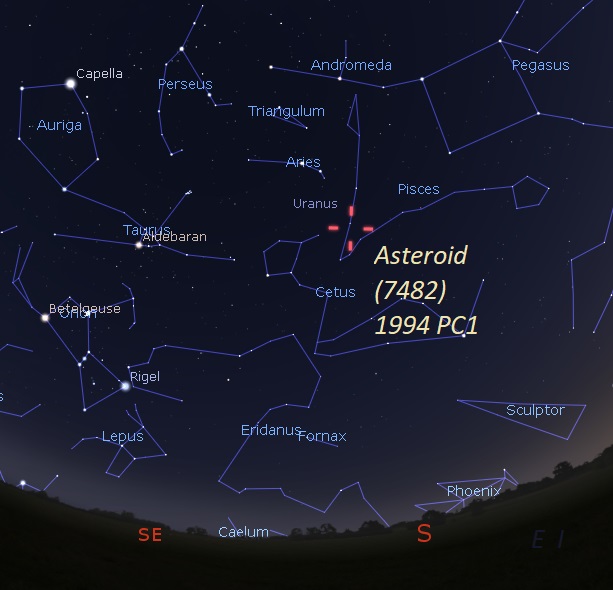
How observers with telescopes spotted it
Sky enthusiasts using a small telescope pointed at the correct time and location were able to spot asteroid (7482) 1994 PC1. For North America, observers with backyard telescopes had the best opportunity to see the huge asteroid hours after the January 18 close approach (see charts below). They were able to detect the space rock’s motion thanks to its size and proximity. When an asteroid such as this passes close to fixed background stars, its movement is more noticeable.
Steven Bellavia, who created the video at the top of this post, used another good technique for spotting the asteroid. He attached a camera to the telescope and took time-exposures of several seconds. Then he pointed the camera and telescope at reference stars in the trajectory of the asteroid. Our charts below show reference stars in the asteroid’s vicinity on January 18, 2022. An image exposed for some seconds shows the space rock’s motion as a streak of light, while shorter exposures reveal the asteroid as a point of light that appears in different locations in the images.
Despite the full moon on January 18, the asteroid was easy to locate with small telescopes, since the moon was located at a very good distance in the sky from the area of the space rock. Prior to its close approach, experienced observers agreed that asteroid (7482) 1994 PC1 would be one of the easiest asteroids to locate, with a telescope pointed at the correct position, at the right time.
Although asteroid (7482) 1994 PC1 would have been an excellent target for astronomers using the Goldstone Radar at California, unfortunately the DSS-14 radar antenna was not able to study the space rock due to maintenance.
Finder maps for asteroid 7482 on January 18
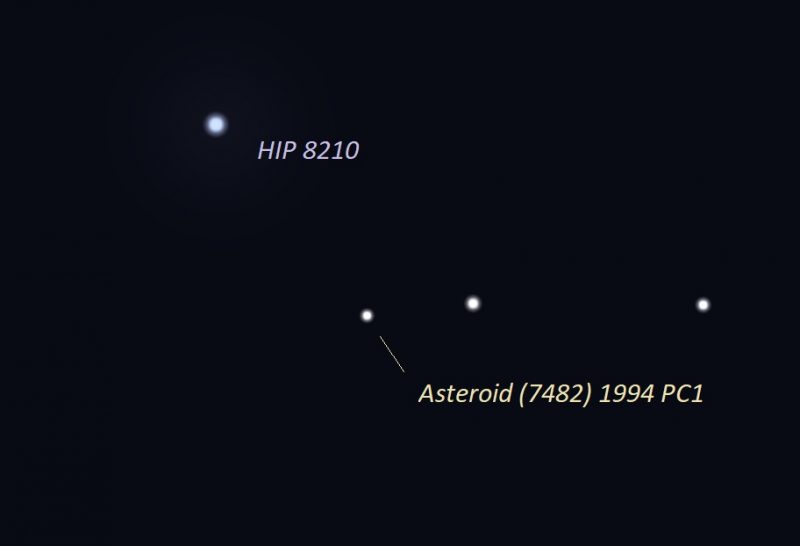

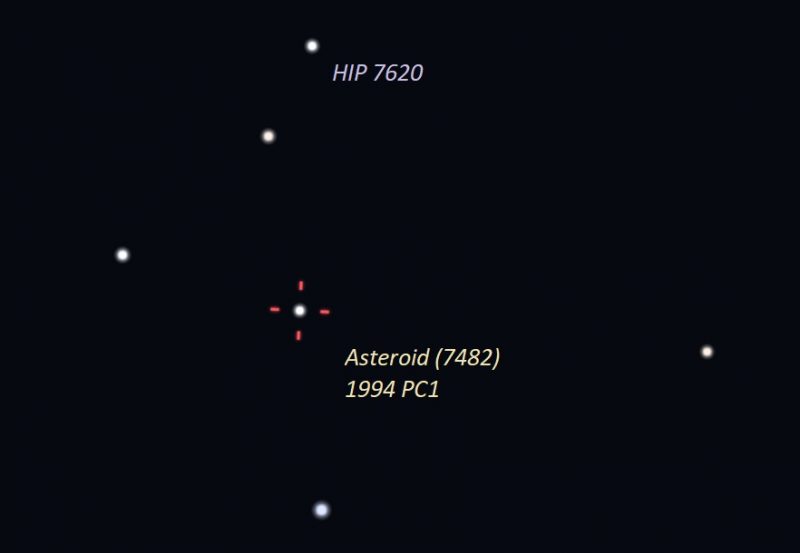
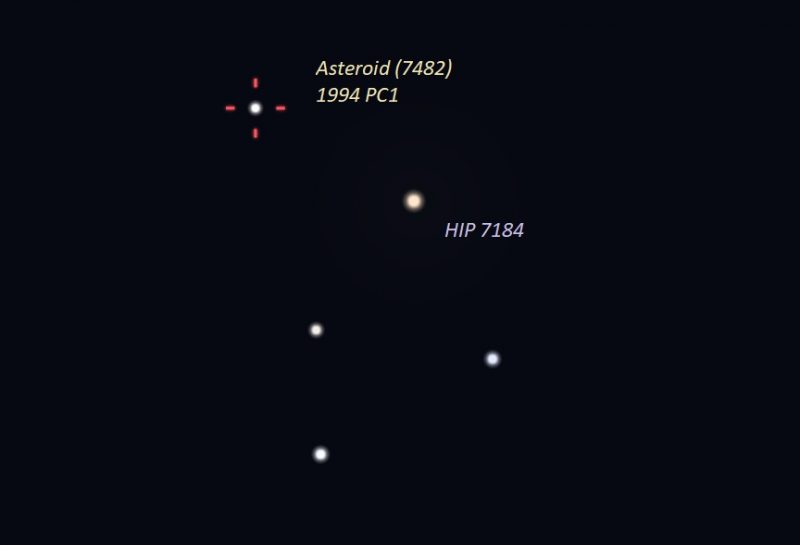

Bottom line: A large asteroid, about .6 mile (1 km) in diameter, safely passed Earth on January 18, 2022. The asteroid never posed a threat to Earth. At its closest, it passed more than five times the moon’s distance.











